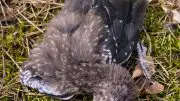
U.S. animal industries, spanning from fur farming to the exotic pet trade, pose significant risks for future pandemics due to lax regulations, according to a study by Harvard Law School and New York University. The research highlights gaps in oversight, and high-risk interactions between humans and animals, and calls for improved regulations to mitigate zoonotic disease threats.
A recent study by Harvard Law School and New York University highlights the potential threat of future pandemics from animal industries in the United States. The research underscores the absence of a robust strategy by the U.S. government to counter these risks. The study recommends strengthening current regulations and introducing new measures to prevent zoonotic-driven outbreaks.
The report is the first to comprehensively map networks of animal commerce that fuel zoonotic disease risk in the U.S. It analyzes 36 different animal industries, including fur-farming, the exotic pet trade, hunting and trapping, industrial animal agriculture, backyard chicken production, roadside zoos, and more, to assess the risks each pose of generating a large-scale disease outbreak.
The report states, far from being a problem that only exists elsewhere, many high-risk interactions between humans and animals that happen routinely and customarily inside the U.S. could spark future pandemics. All of the animal industries the report examines are far less regulated than they should be and far less than the public believes they currently are. Today, wide regulatory gaps exist through which pathogens can spill over and spread, leaving the public constantly vulnerable to zoonotic disease.
“Covid has infected more than 100 million Americans and killed over a million of them. But the next pandemic may be far worse and might happen sooner than we think. The stakes are simply too high for the problem to be ignored,” said Ann Linder, one of the report’s lead authors and a research fellow with the Brooks McCormick Jr. Animal Law & Policy Program at Harvard Law School.
The immense and increasing scale of animal use in the United States makes the country uniquely vulnerable to zoonotic outbreaks. For example, the U.S. is the largest importer of live wildlife in the world, importing more than 220 million wild animals a year, many without any health checks or disease testing.
The U.S. also produces more livestock than almost any other nation. In 2022, the U.S. processed more than 10 billion livestock, the largest number ever recorded. Yet, the USDA does not regulate on-farm production of livestock. At slaughterhouses, inspections are cursory, with each inspector tasked with examining more than 600 animals per hour for signs of disease.
The U.S. is one of the world’s largest producers of pigs and poultry, two important carriers of influenza viruses––viruses that scientists believe are most likely to produce a large-scale human pandemic.
- The largest avian influenza outbreak in U.S. history is currently ongoing and has left 58 million poultry dead since it began in 2022. The virus has spread to several species of mammals in the U.S. and has infected a man in Colorado. Even a slight shift in the viruses’ composition could allow them to move rapidly through human populations.
- The U.S. also has recorded more “swine flu” infections than any other country since 2011. Most of these infections occurred in children exhibiting pigs at state and county fairs, which attract 150 million visitors each year and have given rise to multistate outbreaks of influenza. Despite this, animal fairs remain largely unregulated.
In addition, the people most vulnerable to zoonotic disease in the U.S. are those who work hands-on with farmed animals. Such jobs tend to be disproportionately staffed by people of color and those in rural communities who may be the least likely and the least able to report disease or seek medical care.
- Studies estimate that swine workers have a 30 times greater risk of zoonotic influenza infection than the general public, but these viruses have the potential to spread far beyond livestock workers. The CDC estimates the 2009 “swine flu” hospitalized over 900,000 Americans.
Live animal markets in the U.S. (elsewhere called “wet markets”), where animals are stored alive and slaughtered onsite for customers, also pose serious disease risks. New York City alone is home to at least 84 live animal markets.
- A detailed study of pigs in two live animal food markets in Minneapolis found high rates of influenza viruses not only in and on the animals but also in the air and on surfaces throughout the market.
- A shocking 65% of workers at the market tested positive for influenza during the 12-week study, as did a 12-year-old customer who became sick after touching the railings of a pig pen and one of the animals.
Wildlife also poses significant risks. Hundreds of millions of live wild animals are imported into the U.S. each year, many without ever being looked at by anyone. Only scant and incomplete information exists about these animals, where they are originating, and where they go after they arrive. For example:
- The $15 billion U.S. exotic pet trade brings high-risk species of wildlife into American homes, initiating close human-animal interactions that serve as potential flashpoints for spillover of zoonotic disease––with roughly 14% of American households owning one or more exotic animals from among hundreds of species that range from monkeys to monitor lizards.
- Animals carrying zoonotic diseases are sold through legal channels such as pet stores without health checks or veterinary oversight, as well as through the black market.
- Some exotic animal dealers keep more than 25,000 wild animals together at a single facility, often in poor conditions that facilitate disease spread, before they are shipped off to customers across the country.
- During a major mpox outbreak, which originated in one of these facilities after it received a shipment of exotic animals from overseas, CDC agents were not able to track down a large number of infected prairie dogs that had been sold through pet stores and swap meets.
Even lesser-known animal industries in the U.S. pose serious risks to human health. Crocodile farms have facilitated the spread of West Nile Virus to humans and mink in fur farms have transmitted COVID-19 to humans.
Still, many industries that generate risk are loosely regulated or not regulated at all. Policy change is often reactive, the report explains, happening only after outbreaks occur. Rarely, it says, do agencies take proactive steps to address zoonotic risk, even when they are aware of the danger to the public. For many industries, the government lacks even basic data and has no system to screen animals for disease or to identify zoonotic threats proactively. In some industries, government action actually drives zoonotic risk and increases human exposure to pathogens.
“While zoonotic risks cannot be eliminated, they can be managed and reduced in ways that make all of us safer. But we need to look them in the eye. The risks that these markets present have been ignored or downplayed for far too long,” said Dale Jamieson, Director of NYU’s Center for Environmental and Animal Protection.
Reference: “Animal Markets and Zoonotic Disease in the United States” by Ann Linder, Valerie Wilson McCarthy, Chris Green, Bonnie Nadzam, Dale Jamieson and Kristen Stilt, 2023.
This U.S. report is being released ahead of a larger global policy report overseen by the same researchers from Harvard Law School’s Brooks McCormick Jr. Animal Law & Policy Program and New York University’s Center for Environmental and Animal Protection. The full report, which will be released later this year, examines global policy responses to live animal markets in 15 countries and the role these markets play in zoonotic disease transmission. The project aims to provide a comprehensive assessment that will assist global policymakers and increase public awareness of the dangers posed by zoonotic diseases.









Be the first to comment on "The Hidden Pandemic Time Bomb: Zoonotic Disease Threats Uncovered in the US"